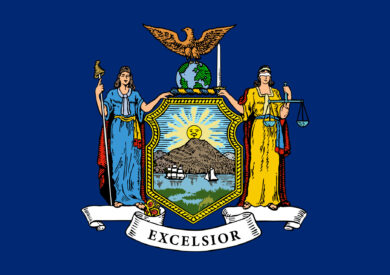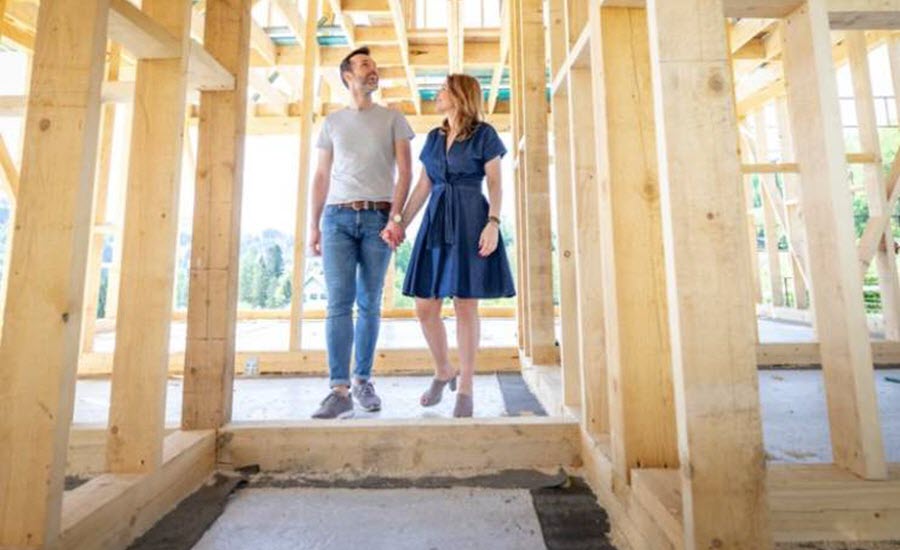
 Popular Cities For Lending in New York
Popular Cities For Lending in New York
Levittown
Mount Vernon
New Rochelle
New York City
Rochester
Schenectady
Syracuse
Utica
White Plains
Yonkers
In the New York real estate market, grabbing properties before your competition is essential for making the best deals. Although real estate investors sometimes go the traditional route and seek bank loans, the process is anything but speedy.
When time is of the essence, waiting for the lengthy process of getting approval is not an option for most investors. New York hard money lenders specialize in providing hard money loans which provide quick funds to investors. These loans are for a non owner occupied property or in some cases for business purpose loans.
New York Hard Money Lender FAQ’S
Below are some of the most frequently asked questions we get regarding hard money loans and lenders in New York.
What Do New York Hard Money Lenders Specialize in?
New York hard money lenders specialize in providing short-term, creative financing for real estate investors. If you seek a conventional lender to purchase an investment property, your loan request will be based on the property’s value and your assets. Your credit score, job, and finances will be scrutinized intensely. Hard money lenders base their final loan decisions on the after-repair value. The ARV represents the potential value of a property after all repairs have been accomplished.
What are the Benefits of New York Hard Money Loans?
New York hard money loans offer advantages that traditional banks cannot. Lenders like Acamnet Financial offer a higher level of flexibility than banks. When qualifying for this type of loan, lenders do not delve too deeply into the finances of real estate investors. In most cases, simply present the property and your plans, which saves you the hassle of gathering countless financial documents.
Do New York Hard Money Lenders Look at my Credit Score?
One of the greatest benefits of working with New York hard money lenders is the lack of credit score requirements. One of the first things a bank does is check your credit score. You can get approved for a hard money loan in New York even if you have bad credit or poor credit, bankruptcies, and foreclosures in the past. New York Hard money lenders primarily care about the property you are purchasing.
What is the Interest Rate & Points for Hard Money Loans in New York?
Interest rates for hard money loans in New York are typically higher than traditional bank loans (conventional loans) because of the greater risk lenders must take on when approving loans. When searching for a hard money lender near me in New York, you will find average interest rate is between 8%-15%. You should also be aware that lenders sometimes charge points that are meant to offset their administrative costs. Each point represents 1% of the total loan amount. The average points lenders charge is between 1 to 3. Some lenders may charge up to 10 points. These points are due upfront or at closing, depending on the lender.
What Should I Look for in a New York Hard Money Lender?
There are many benefits to working with a New York hard money lender. You just need to make sure you are working with the right lender. You can rely on Acamnet Financial Group when you need us most. We offer reliability, consistency, experience, and support. As a real estate investor, you know the importance of grabbing the best property deals when they become available.
How can Hard Money Lenders in New York Help Me?
Whether you are new to real estate and real estate projects or an old pro, you know having the capital to purchase real estate is essential. Without funds, you will miss out on real estate transactions. When you partner with hard money lenders in New York, you will quickly get the money you need without jumping through the hoops of traditional bank lenders.
How do I get a Hard Money Loan in New York?
When you want a hard money loan in New York, begin by preparing the property information. Location, size, purchase price, after repair value, repair costs, etc. In most cases, the financing will be based on these numbers. Then, apply for a hard money loan in New York using this information and supply some financial information. Then, an appraisal will be ordered to assess the loan-to-value ratio, which will influence the loan amount.
How do I Refinance a New York Hard Money Loan?
Refinance a New York hard money loan will involve moving from a high interest, short term loan to a longer term, usually lower interest rate loan. Typically a conventional type of loan. When refinancing a New York hard money loan you will find it will have a more stringent set of guidelines. You will need to have sufficient credit and income qualifications. As the lending landscaping and regulations constantly change, you want to consult a knowledgeable conventional loan expert.

Current Real Estate Trends In New York (2024)
The New York City real estate market is of great interest, as it provides an indication of the financial health of the city. This article provides an overview of the current trends in the real estate market, including data on sales and pricing patterns, as well as potential issues and outlooks.
An objective, analytical approach is taken, with an emphasis on data-driven research that eliminates any personal bias. In this way, readers are presented with an impartial understanding of the current state of the market in New York City.
The data is examined closely to determine trends, allowing for a comprehensive analysis that provides a full picture of the situation. Potential issues and challenges are identified, as well as possible outlooks for the future.
This article provides an in-depth look at the current state of the real estate market in New York City.
Market Overview
The real estate scene in New York has seen some major changes in pricing and demand. Data shows that home prices in New York City have increased significantly in the past year, reaching an all-time high.
Luxury apartments in Manhattan are in high demand, leading to more competition and higher prices. This indicates a strong real estate market in New York with a growing demand and rising prices.
Sales and Pricing Trends
The sales and pricing landscape in New York has seen quite a bit of change in recent times. Data shows that some areas have seen an increase in sales and prices while other areas have seen a decrease. Factors such as location, property type, and market demand all play a role in determining these trends.
It is important to consider these elements when attempting to understand the current state of the real estate market in New York.
What is clear is that the sales and pricing landscape in New York is constantly changing and evolving. It is essential to stay up to date on the latest trends and developments in order to make informed decisions. By doing so, it is possible to take advantage of opportunities and avoid potential pitfalls.
Challenges and Outlook
The urban metropolis of New York has been facing difficult times in the real estate market due to the COVID-19 pandemic. Demand has decreased while supply has increased, leading to lower sales and prices in both the residential and commercial sectors. Furthermore, stringent regulations and high taxes pose difficulties for buyers and investors.
The market’s future will depend on factors such as vaccine distribution and financial stability. As the pandemic continues to unfold, the real estate market in New York remains uncertain.
Sources
https://www.noradarealestate.com/blog/new-york-real-estate-market/
https://www.parcllabs.com/articles/new-york-real-estate-2023
https://www.houzeo.com/blog/new-york-real-estate-market/

All About New York
New York, often referred to as the ‘Empire State,’ is a region located in the northeastern part of the United States. It is known for its diverse geography, ranging from mountainous areas in the north to coastal plains in the south.
The climate in New York varies significantly across the state, with colder temperatures and heavy snowfall in the northern regions and milder winters in the south.
The economy of New York is robust and diverse, with major industries including finance, technology, healthcare, and tourism.
The state is home to a large and diverse population, with people from various ethnic backgrounds and cultures. New York has a rich history and has been influenced by multiple cultural groups throughout the years.
The state boasts numerous landmarks and attractions, including iconic sites such as the Statue of Liberty, Times Square, and Central Park.
This article aims to provide an objective and informative overview of the geography, economy, population, history, and cultural influences of New York, as well as highlight some of its famous landmarks and attractions.
Geography and Climate
New York’s geography encompasses diverse landscapes, including mountains, rivers, and coastal areas, significantly contributing to the state’s unique climate patterns. Located in the northeastern part of the United States, New York experiences four seasons.
The summers are typically warm and humid, with average temperatures ranging from 70 to 85 degrees Fahrenheit. Winters, on the other hand, are cold and snowy, with temperatures often dropping below freezing.
The state’s proximity to the Atlantic Ocean also influences its climate, with coastal areas experiencing milder winters and cooler summers compared to inland regions. Additionally, the presence of the Appalachian Mountains in the western part of the state affects rainfall patterns, resulting in higher precipitation levels in those areas.
As we transition to the subsequent section about ‘economy and industries,’ it is essential to note that New York’s diverse geography and climate have played a significant role in shaping its economic activities.
Economy and Industries
Manhattan, the most densely populated borough of the city, is a central hub for finance, with Wall Street serving as the epicenter of global financial markets. It is home to numerous financial institutions, including the New York Stock Exchange and the Federal Reserve Bank of New York.
The economy of Manhattan is dominated by the finance, insurance, and real estate sectors, which contribute significantly to the city’s GDP. Additionally, the city boasts a thriving media and entertainment industry, with many major television networks and film production companies based in Manhattan.
Other important sectors include technology, healthcare, tourism, and professional services. Manhattan’s diverse and robust economy attracts professionals worldwide, making it a vibrant and dynamic economic center.
Transitioning to the next section, Manhattan’s economy is closely intertwined with its population and demographics.
Population and Demographics
Population and demographics in Manhattan play a significant role in shaping the dynamics of its economy and societal fabric. With a population of approximately 1.6 million, Manhattan is the most densely populated borough in New York City.
The demographic makeup of Manhattan is diverse, with a rich tapestry of cultures and ethnicities. According to the latest census data, most residents are non-Hispanic whites, followed by Asians, African Americans, and Hispanics.
The population in Manhattan is characterized by its high levels of education and income, attracting professionals from various fields. These demographics directly impact the industries and businesses that thrive in the borough, such as finance, technology, and the arts.
Understanding the population and demographics of Manhattan is essential to comprehending its economic and cultural landscape. Transitioning to the subsequent section about ‘history and cultural influences,’ we can explore the factors that have shaped the borough’s unique identity.
History and Cultural Influences
Manhattan’s historical events and cultural influences have played a pivotal role in shaping its unique identity and have left a lasting impact on its economic and social landscape.
Manhattan’s history dates back to the 17th century when the Dutch first settled it. Over the years, it has witnessed significant events, such as the American and Industrial Revolutions, transforming it into an influential center of trade and commerce.
The influx of immigrants from various parts of the world has contributed to the diverse cultural fabric of the city, with neighborhoods like Chinatown, Little Italy, and Harlem reflecting the rich heritage of their communities. These cultural influences can be seen in the city’s architecture, cuisine, and artistic expression.
Transitioning into the subsequent section about landmarks and attractions, Manhattan’s historical and cultural significance is further highlighted by its iconic landmarks such as the Statue of Liberty, Times Square, and Central Park.
Landmarks and Attractions
Landmarks and attractions in Manhattan showcase the city’s rich history and cultural diversity, captivating visitors with renowned sites such as the Statue of Liberty, Times Square, and Central Park.
The Statue of Liberty, a symbol of freedom and democracy, stands tall on Liberty Island, welcoming millions of tourists annually.
Times Square, known as ‘The Crossroads of the World,’ is a vibrant hub of entertainment, advertising, and shopping. It is famous for its dazzling billboards and the iconic New Year’s Eve ball drop.
Central Park, an oasis in the heart of Manhattan, offers a peaceful retreat for locals and tourists. It has 843 acres and features lush green spaces, scenic trails, lakes, and recreational facilities.
These landmarks and attractions reflect the city’s vibrant and diverse cultural heritage, making Manhattan an exciting destination for visitors worldwide.


 Popular Cities For Lending in New York
Popular Cities For Lending in New York